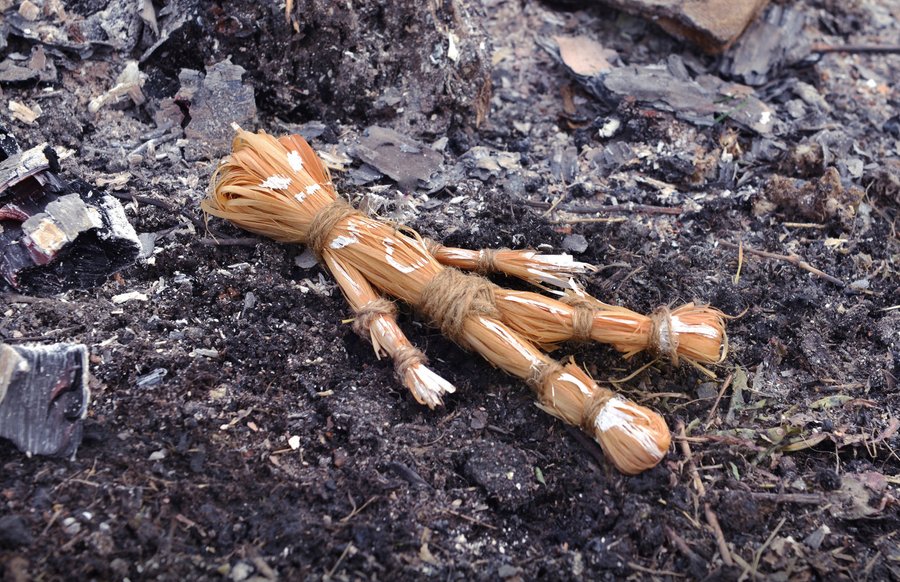Yule and Sooty Thomas
Black Thomas and Yule Hay
by offeringstone
(used with permission of the author)
The Winter Solstice, that still point in the turning year before the days begin once again to lengthen, is today.
...
In Estonia, December 21 marks the start of Yuletide, which we call jõuluaeg, jõulu being our word for yule. Alo Raun’s useful Eesti Keele Etümoloogiline Teatmik, aka the Estonian Etymological Handbook, says the word jõulud originated from an Old Swedish word, iul. Yule is also the pagan word for the Winter solstice.
It is also toomapäev, the day of St. Thomas the Apostle, from the long-ago days when Estonians were Catholics, prior to the Protestant Reformation.
Toomapäev is considered the real start of the yuletide celebrations. In order to peacefully usher in the holidays, homes underwent a “seriously major cleaning,” (my translation) according to Lauri Vahtre’s book, Maarahva tähtraamat. The walls and ceilings were cleared of soot and grime; hence the phrase “Must-toomas välja!” (Black-Thomas out!)
Our friend Must-Toomas, undoubtedly named after the saint, was also known in some parts of Estonia as Tahma-Toomas, which also meant Black-Toomas;or as Tolmu-Toomas (Dust-Thomas) or Nõgi-Toomas (Soot Thomas), according to an article on the remarkable website http://www.folklore.ee. The article, “Clothed Straw Puppets in Estonian Folk Tradition” was written by Ergo-Hart Vastrik in 1991 and translated into English by Mati Limberg in 1997. Link: http://www.folklore.ee/folklore/vol7/metsikx.htm
Sometimes the collected dust and soot was added to straw and old rags to fashion a kind of poppet figure. In doing so, the female head of the household, the perenaine, symbolically tied into it all the bad luck, illness, grievances and dirt of the house. Then she secretly carried it to a neighbor’s house, under cover of darkness, and placed it next to a door or window. The neighbor, naturally, would not want Sooty-Toomas on her property either, so the figure was carried from house to house in the community over the course of the holiday season. Sometimes the poppet was called Christmas Toomas or New Year Toomas.
...
Of utmost importance in the Estonian household, was the requirement that the Yuletide beer had to be ready before the 21st. If not, it was believed that Black-Toomas would get into the beer and ruin it.
Doing work other than cleaning was unlucky on the 21st of December. Spinning was forbidden, as was grinding grain with a mortar and pestle (probably to honor the grain goddess, since much of the day’s ritual centered on grain and beer).
When all the household was clean, the Yule rye-hay was brought indoors and scattered on the floors. In the distant past, this was done to honor the grain fairy/goddess/spirit, who brought joy and well-being to the household, according to Kustas Põldmaa in his book Nurmed ja Niidud.
https://offeringstone.wordpress.com/2013/12/21/black-thomas-and-yule-hay/
Casting out Sooty Thomas is a form of imitative magic. One casts out the darkness in order to prepare a place for the newly-reborn light and the lengthening days to come.
